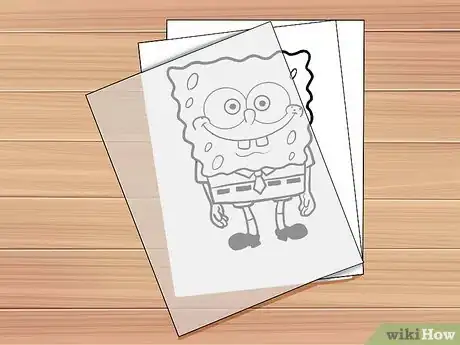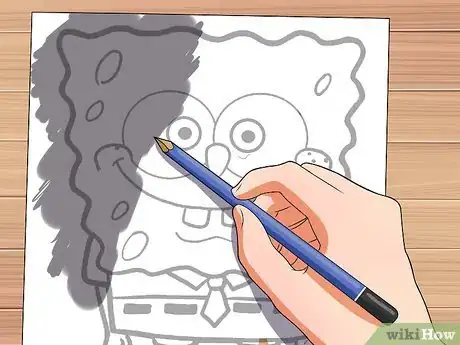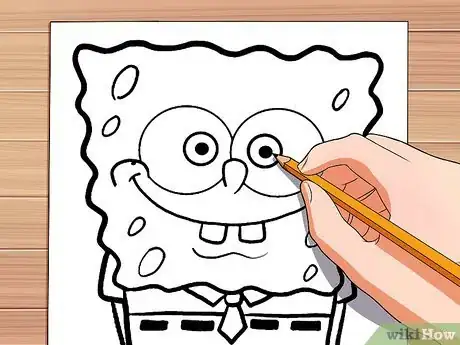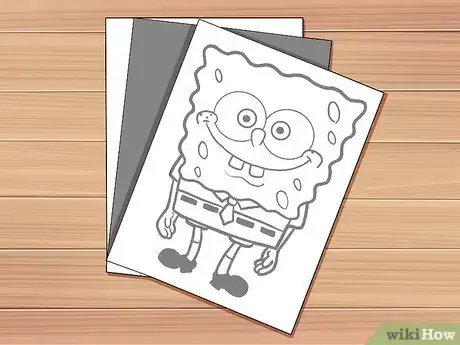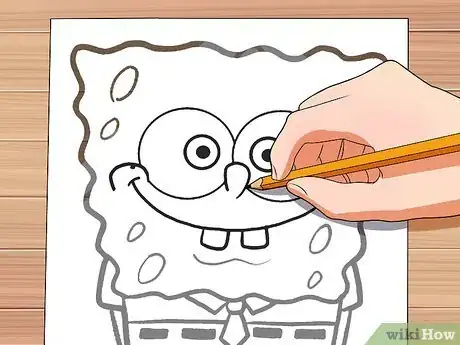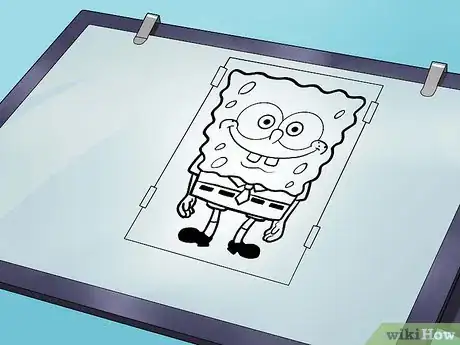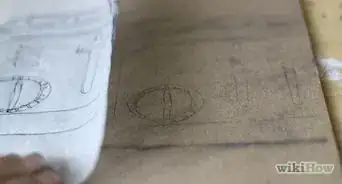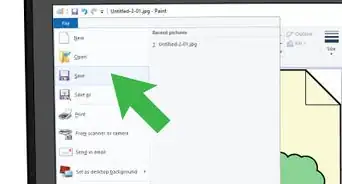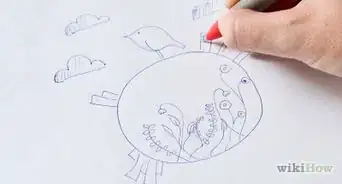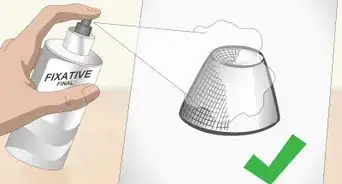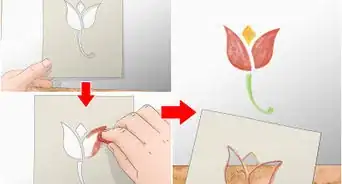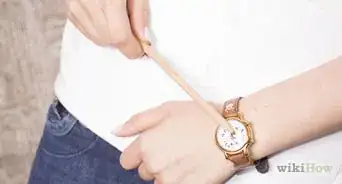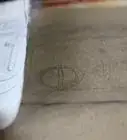This article was co-authored by Kelly Medford. Kelly Medford is an American painter based in Rome, Italy. She studied classical painting, drawing and printmaking both in the U.S. and in Italy. She works primarily en plein air on the streets of Rome, and also travels for private international collectors on commission. She founded Sketching Rome Tours in 2012 where she teaches sketchbook journaling to visitors of Rome. Kelly is a graduate of the Florence Academy of Art.
This article has been viewed 224,955 times.
Whether you're struggling with perfecting a drawing or you just want to quickly copy an image, tracing is a fast an easy way to get a 'carbon copy' of an image. There are several ways to trace, including using tracing paper, transfer paper, and a lightbox, each with their own pros and cons. Read on at Step One for detailed instructions on each method.
Steps
Using Tracing Paper
-
1Set up your sheets of paper. Tracing paper is a very thin paper - almost like tissue paper - that is as a result, easy to see through. Place the image you would like to trace on your tabletop, and tape the corners down. Put your tracing paper over the top of it; you can secure the corners of the paper if you would like, or leave it free so that you can adjust it as you draw.
-
2Outline your image. With a pencil, carefully draw the outlines of all the figures in your image. Don’t worry about adding any shading; focus only on drawing the outlines of objects. Be sure to include any small details that may be in the image.Advertisement
-
3Coat the back of your tracing paper with graphite. When you’ve finished tracing your picture, remove the tape and flip your tracing paper over. Using a soft graphite pencil (such as 6B or 8B), shade the area over all the lines that you’ve drawn on the other side of the paper. Make sure that you add a relatively thick layer of pencil down, so that there is enough to accomplish the next step.
-
4Adjust your papers again. Take the paper that you are transferring your image to, and tape it to your tabletop. Then, flip your tracing back so that it is right-side up, and tape it in place over the top of the drawing paper. Be careful not to rub the tracing paper too much, for fear of smearing the graphite on the underside.
-
5Create your final outline. Take a very sharp pencil or pen, and applying medium to heavy pressure, draw over all of your outlines again. As you do this, the graphite you shaded in on the underside of the tracing paper will transfer under the pressure to your drawing paper. Work around your picture until you’ve completed all of the outlines.
-
6Finish your drawing. After going over your outline a second time, you can remove the top sheet of tracing paper to reveal your final drawing on the drawing paper below. At this point, fill in any missing lines that there might be, and add any shading or details from the original image.
Using Transfer Paper
-
1Layer your papers. To trace an image using transfer paper, you will need three pieces of paper: your image, your transfer paper, and your drawing paper. Place them on your table, and tape them down in order. Put your drawing paper (that you’re transferring the image to) on the bottom, followed by your transfer paper (graphite-side down), and your image on top.
-
2Outline your drawing. Using a very sharp pencil or pen, carefully work around the outline of each figure and object in your image. As you apply pressure with your pencil/pen, the graphite on the transfer paper below will be applied to the drawing paper on the bottom. Make sure to get any details you want in the photo, and avoid adding shading.
-
3Finalize your drawing. When you’re sure you’ve traced all the major components in your image, remove your image and tracing paper from your drawing paper on the bottom. At this point, go in and make any changes or enhancements to the outline that you’ve traced. You could then shade or color your image, if you so desired.
Using a Light Box
-
1Set up your supplies. Place your lightbox on your tabletop (or lap, depending on the style you have), and put your image over the top. Tape the corners of your image down, and layer your drawing paper on top of the image. Secure the drawing paper with tape as well, and turn the light on. Assuming your drawing paper isn’t too thick, you should be able to see the image through your drawing paper.
-
2Trace the outline of your image. Carefully work around your image, outlining all the major objects and figures with your pencil. Because you don’t have to remove or transfer any papers other than the one you’re drawing on, you can shade in figures in addition to the outlines, if you want.
-
3Finish your drawing. Turn off the light on the lightbox to determine if you’ve missed any spots on your drawing. If you have, turn the light back on, fill them in, and finish up your outline. When you’ve finished tracing the image, you are free to move on and add color or more shading and detail, with or without the use of the lightbox.
Community Q&A
-
QuestionHow can I trace without using tracing paper, transfer paper, or a light box?
 Community AnswerTape your picture to a bright window, and place a clean sheet of paper over it. The original picture will shine right through the blank paper. You can also save your picture onto your computer, turn off the lights, and place a blank sheet of paper over your screen; the light from the screen will also cause the picture to shine through the blank paper.
Community AnswerTape your picture to a bright window, and place a clean sheet of paper over it. The original picture will shine right through the blank paper. You can also save your picture onto your computer, turn off the lights, and place a blank sheet of paper over your screen; the light from the screen will also cause the picture to shine through the blank paper. -
QuestionWhat if it is dark out and you have to do it in a days time?
 Community AnswerUse a tablet/ipad with a white background or a computer screen with a white background.
Community AnswerUse a tablet/ipad with a white background or a computer screen with a white background. -
QuestionHow can I check to see if someone has traced a drawing?
 Community AnswerIf they have other artwork available, check that to compare the style, materials, etc. You can also just do some research and see if you can find their drawing, or a similar one, from another source.
Community AnswerIf they have other artwork available, check that to compare the style, materials, etc. You can also just do some research and see if you can find their drawing, or a similar one, from another source.
About This Article
To trace an image, start by taping the picture you want to replicate on a tabletop and putting tracing paper over it. Next, use a pencil to draw the outlines of all the figures in your image. Then, flip your tracing paper over and use a soft graphite pencil to shade over all the lines you’ve drawn. Once you've shaded the lines, flip the tracing paper over again and place it onto a new piece of paper. Finally, use a sharp pencil to draw over all of your outlines again, which will transfer all of your graphite to your final drawing. To learn how to trace using a light box, keep reading!
